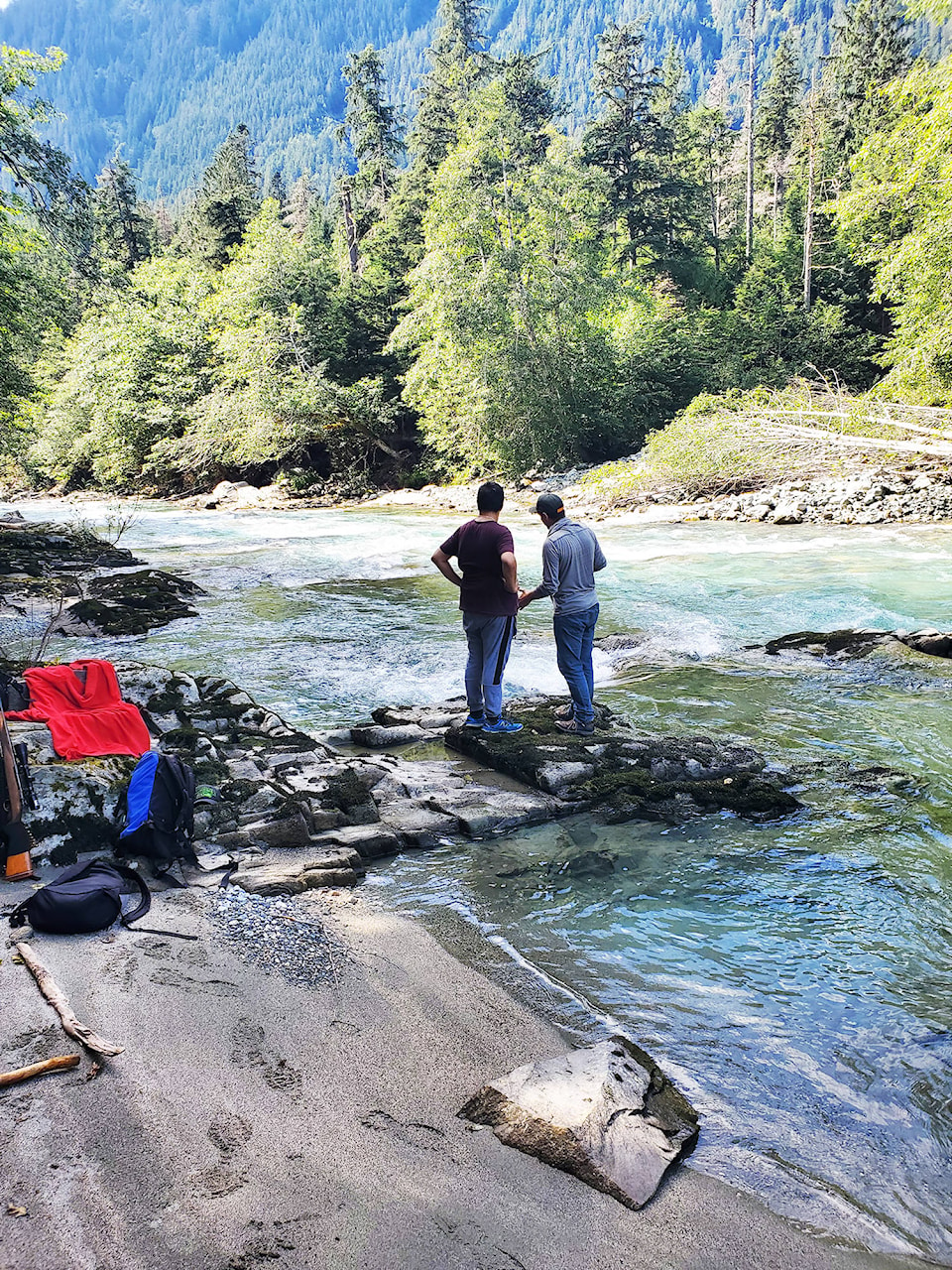It’s not much of a secret that Bella Coola burns diesel. Lots of it. During the winter months at peak hydro usage, Valley residents can power through a whopping 392,000 litres in just two months. Even with the employment of the hydro generation station at Clayton Falls, there is no time when the diesel generators are not employed.
This reliance on diesel fuel has been the main driver for a Nuxalk Nation-led project now slowly coming to fruition. During the past several years the Nation has been exploring potential sites for an additional run of river hydro-electric generating station, one that would reduce the Valley’s diesel consumption by up to 80 percent.
“We have just completed hydropower preliminary feasibility study where we looked at multiple sites in the Valley that would be suitable for a run of river hydro-power project,” said Vince Robinson, Clean Energy Coordinator with the Nuxalk Nation. “Based on this preliminary study, Nooklikonnik Creek has been selected as the most promising site.”
In partnership with Kamloops-based consulting firm Urban Systems, the department held an Open House on August 19 at Acwsalcta Gym to engage with the community and discuss the project.
Independent hydro projects are not new and have been explored in Bella Coola for decades. Being located in a non-integrated (off-grid) area means residents pay higher electricity rates than the rest of the province. Similar communities include Haida Gwaii, Atlin and Dease Lake, all of which also depend heavily on diesel, although both Atlin and Dease Lake now also employ small hydro-electric operations to offset it whenever possible.
So far, Bella Coola relies on diesel all year round, and its usage is especially high during the winter months.
“Fuel consumption amounts change from year to year depending hydro generation at Clayton Falls, weather conditions, and how much power customers use,” said Bob Gammer, BC Hydro Manager, Northern Community Relations in 2018. “The lowest annual diesel consumption in the last five years was 1,731,535 litres in the fiscal year ended on March 31, 2015. In the 12 months ending March 31, 2017 consumption was 2.36 million litres, with a low of 64,000 litres in August and a high of 392,000 in December and January.”
Just to the south of Bella Coola the Wuikinuxv Nation is pursuing their own project: a 350-kilowatt hydro-diesel hybrid that will be constructed on the Nicknaqueet River, 2.3 kilometres southwest of the Wuikinuxv Village at Rivers Inlet. It is expected to replace 92 percent of electricity produced in Wuikinuvx by diesel generators.
This is something Robinson and his colleague, Climate Action Coordinator Terris Purkiss, have been dreaming about for some time.
“Our biggest goal is to replace the diesel with cleaner energy,” said Purkiss. “That is the main driver behind the entire project.”
The Nooklikonnik project is part of the Nation’s larger Climate Change Resiliency Plan, which to date has identified a number of risks to the community due to climate change. These include flooding, forest fires, and drought.
Climate change modeling for the Valley has predicted warmer, drier summers and more precipitation during the winter months. Reductions in glaciers and snowpack could impact the Valley’s water supply, a rise in sea levels is a strong possibility and more frequent and intense storms have also been predicted.
While still in its infancy, the potential for a run of river hydro-power at Nooklikonnik Creek is promising. Sites have to meet certain criteria to even be considered for such a project, and the team looked at a total of 10 sites before narrowing it to three and eventually settling on Nooklikonnik as the best option so far.
The basic formula for successful hydropower generation all comes down to head and flow. Head is the change in water levels between the hydro intake and the hydro discharge point. The amount of power, and therefore energy that you can generate is proportional to the head and the flow. The flow rate and how it varies over a year is an equally important parameter.
“Nooklikonnik has good potential for a variety of reasons,” said John Kenney, an Environmental and Sustainability Energy Professional with Urban Systems. “It has good head and flow, it’s located in a non-culturally sensitive area, and it’s accessible.”
As Kenney explained, while BC Hydro wants to reduce diesel consumption, the company also wants to continue using their existing hydro-electric infrastructure at Clayton Falls. Therefore, they are only willing to buy a certain amount of additional hydroelectricity.
“Basically, BC Hydro will only buy a certain amount of power,” said Kenney. “So, we’ve really taken this into consideration when planning the size of the project. You could theoretically produce a lot more power than the Valley needs, but we don’t want to oversize the project.”
Conversations have occurred regarding the production of excess electricity, as the neighbouring community of Anahim Lake is also diesel-dependent, but at this time the infrastructure to export power from the Valley simply doesn’t exist.
The estimated cost for the project so far is just over $11M. Robinson said that the next stage, which is focused on additional technical and engineering research and building a strong business case for the proposed project, is dependent on community engagement and support.
“If we don’t have community support for the project we won’t continue to move forward,” he explained. “We’re planning on hosting more Open Houses as the project progresses, and we encourage everyone to come out and ask questions.”
